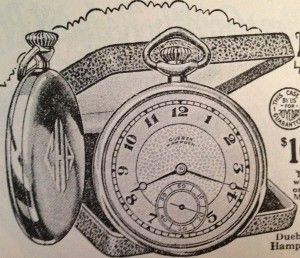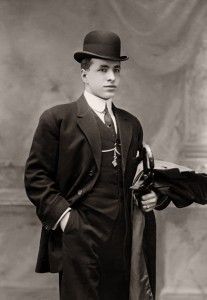You have no items in your shopping cart.
Recent Posts
-
Why an Elegant Cane Is a Thoughtful Gift for Loved Ones?
-
The Art of Christmas Design: Walking Canes That Celebrate the Season in Style
-
How an Ergonomic Walking Cane Handle Prevents Hand and Wrist Strain?
-
How to Walk With a Cane Correctly to Avoid Back or Shoulder Strain?
-
5 Common Mistakes People Make When Buying a Walking Cane (and How to Avoid Them)
-
How to Choose a Walking Cane That Reflects Your Personality (Not Just Your Needs)?
MOST POPULAR NOW
30
Jan
This is the 1920s style guide with a look at men’s and women’s accessories: Gloves, watches, handkerchiefs, glasses, umbrellas, and canes.
Accessories of 1920`s
Gloves
Traveling from place to place, gloves kept hands warm and clean. For men, formal occasions called for white gloves, while day colors came in brown and grey leather. The fit snugly and closed with a button at the wrist. They were removed indoors along with hats for lengthy visits and entertaining parties. Leather driving gloves became requisite items for all car owners.

Many women of the 1920s would no sooner leave the house without gloves than they would leave without a hat. Gloves were either wrist-length or the longer gauntlet length. Very long white button up leather or silk gloves were worn during formal evenings. Thick leather gloves with wool lining were worn in the winter, while summer and spring called for silk, cotton, and lace. Colors were dyed to match either a dress or accessories for the upper class, or were a plain neutral color for the lower classes. Gloves often had ornate decorations on the cuffs. When not worn, it was considered tacky to carry gloves or wave them through the air. They were to be put in a coat pocket or handbag. Gloves remained on at all times unless a woman was doing something that could dirty her gloves, such as eating or applying makeup.

Watches
Wristwatches grew in popularity throughout the ’20s. In the beginning of the decade, wristwatches were basically pocket watches on straps. Over time, watchmakers used smaller works specifically made for watches, which allowed for a change in shape of the watch. Rectangular watches with rounded corners became available. Regardless of shape, almost all women’s wristwatches were on silk ribbon bands and men’s on leather straps. Fancy ones had filigree or inset diamond casings. White gold was the most popular, with yellow gold being another option.

Handkerchiefs
Ladies’ pretty cotton, linen, and lace handkerchiefs were still very common, although their use dropped off a bit in the ’20s when disposable tissues became available. These small pieces of cloth were a blank canvas before hand-embroidery was applied, resulting in endless designs. Ladies took patterns and ideas from home arts magazines. Many hankies featured the Art Deco designs that were very popular at the time and also had floral prints. Usually just the edges or corners were embroidered, leaving the center pure. Monogramming was still very trendy, too. With an increase in wealth and travel, many women collected souvenir handkerchiefs from the ships they sailed on or hotels they slept in.

There are two reason for men to carry a handkerchief. The first is for decoration as a pocket square in the suit coat. The pocket square was of a hue that coordinated with the necktie. It was a relatively new trend in the 1920s to wear a colorful pocket square with a suit.
Glasses
Men and women wore the same eyeglasses, with most people opting for round frames, although some favored oval and octagon. Rimless or pinch nose frames were still common from early decades, although they looked dated. Round horn or shell-rimmed frames were worn throughout the decade, but sturdier white gold frames gradually replaced them. Sunglasses followed the same trends but they didn’t catch on until the late ’20s.
Umbrellas and canes
Part of men’s dress in the 1900s was to carry a rolled umbrella at all times. It was a fashion accessory, a cane, walking stick, rain covering, and occasionally a weapon. It was more popular in Britain and with American men who followed the traditional way of dressing. Some men continued the tradition of carrying the rolled umbrellas regardless of the weather, but most men turned to canes instead. All wood umbrellas or silver top stick or handle canes were in style.

Women also walked with canes. They preferred walking sticks with a rope loop hooked around the wrist. Instead of these being fashion accessories for the young, they were a necessary tool for the less able bodied.
Also Purchased
-
Beige Walking Cane for Ladies Chamomile Flower, Wooden Walking Stick
Introducing our beautiful Beige Walking Cane for Ladies with Chamomile Flower, a Wooden Walking Stick that is hand carved and handmade, making it both pretty and unique. This walking cane...$79.50 -
Black Skull Head Walking Stick, Wedding Ceremony Designer Skull
Looking for a stylish and unique walking stick to elevate your look at your next event? Check out our Black Skull Head Walking Stick, the perfect accessory for any wedding...From $217.00 -
Exotic Burl Wood Walking Cane – Fashionable Artisan Stick
A sculptural statement in deep, oceanic blue — this walking cane is more than a support accessory, it's wearable art. Meticulously hand-shaped from stabilized burl wood, the handle evokes the...$425.00 -
ArtWalkingSticks™ MAGIC Walking Cane, Handmade - Make to Order
This piece of art is created for those who value details. We make one of a kind, handcrafted wood and resin canes. Our Wooden Canes are completely unmatched in creativity....$430.00 -
Umbrella with Eagle Handle, Fashion Umbrella For Men
Make a bold and fashionable statement with our Umbrella with Eagle Handle - a unique and functional accessory designed for men. The striking eagle handle is the highlight of this...$325.00 -
Fashionable Lion Shoehorn Long Handle, Pearly Brown Shaft, Handmade
Introducing our Fashionable Lion Shoehorn, a handcrafted, long-handled shoe horn with a pearly brown shaft that's both stylish and practical. The intricate Lion design adds a touch of elegance to...$240.00
































